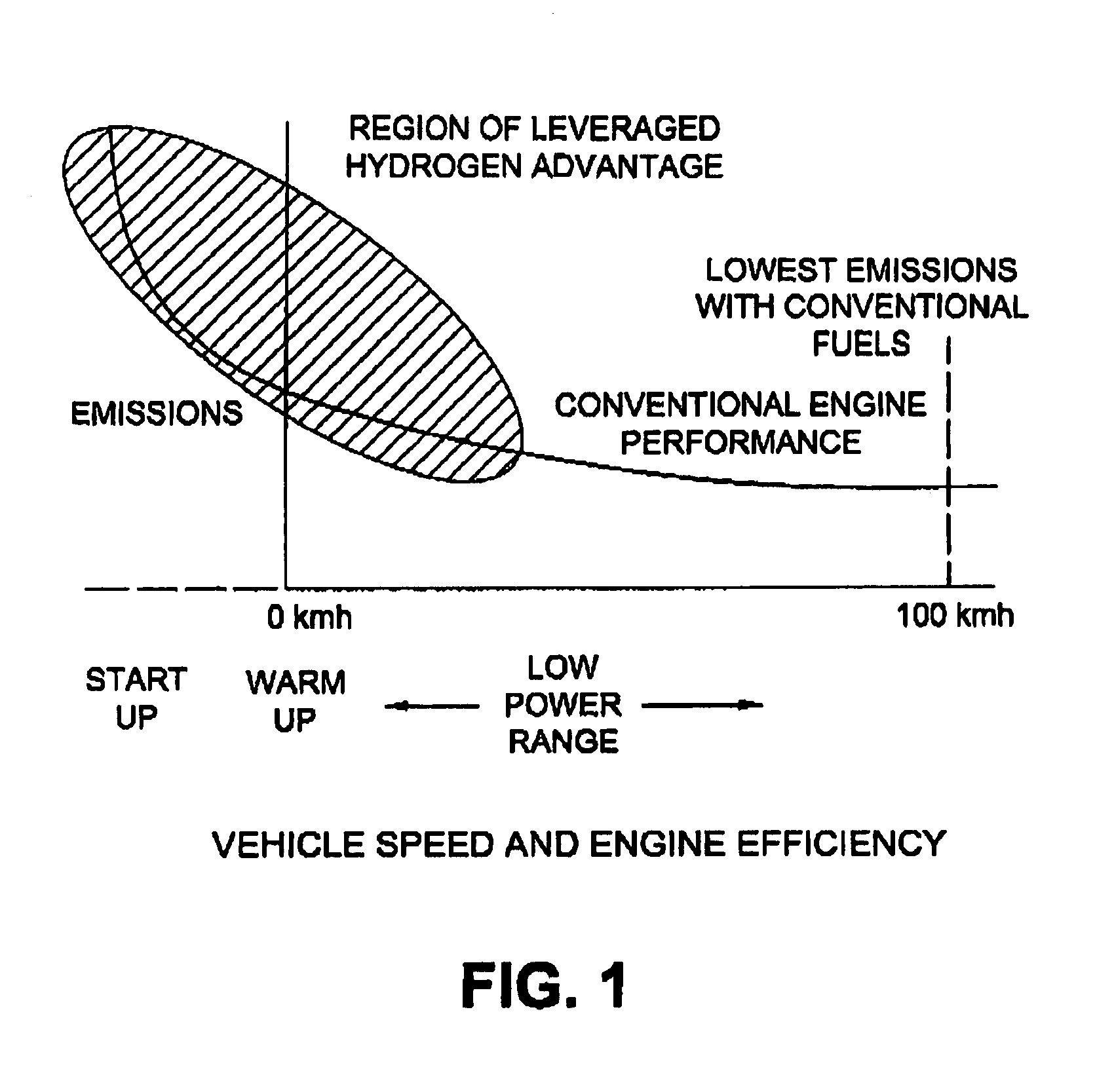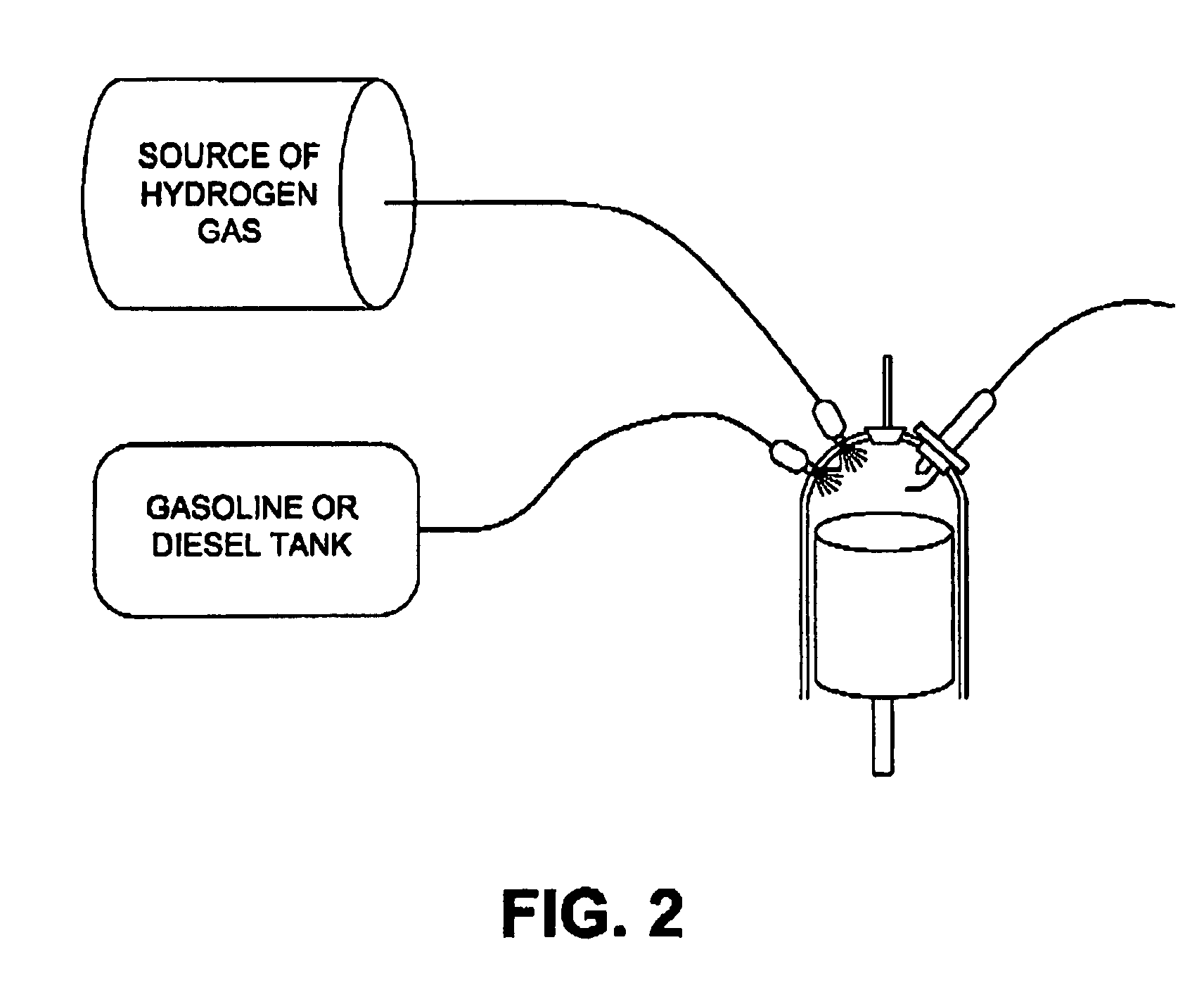System and method for operating an internal combustion engine with hydrogen blended with conventional fossil fuels
a technology of hydrogen and internal combustion engine, which is applied in the direction of machines/engines, electrical control, mechanical equipment, etc., can solve the problems of prohibitive deployment, no commercial success, and inability to retrofit existing ic engines using these systems, so as to reduce emissions in existing ic engines without affecting performance and longevity, and inexpensive rep.
- Summary
- Abstract
- Description
- Claims
- Application Information
AI Technical Summary
Benefits of technology
Problems solved by technology
Method used
Image
Examples
Embodiment Construction
[0028]In order to lighten the following description, the following acronyms will be used:[0029]IC Internal Combustion;[0030]EGR Exhaust Gas Recovery;[0031]NGV Natural Gas Vehicle;[0032]OEM Original Equipment Manufacture
[0033]As indicated above, the substitution of fossil fuels for hydrogen cannot be accomplished economically unless there are incentives from government agencies (which have control over the tax structure of the fuels), to all of the energy industry, the automotive industry and the end user, i.e. the consumer. Given the current lack of such incentives, the main objective of how to promote the use of hydrogen and how to set up the infrastructure to supply a source of hydrogen remains. With the use of the system and method of the present invention, existing vehicles can be modified to make use of hydrogen in an economical way. Further, the addition of hydrogen to existing fuel is a permanent environmental solution because hydrogen will not break down like a catalyst and ...
PUM
| Property | Measurement | Unit |
|---|---|---|
| time | aaaaa | aaaaa |
| combustion temperature | aaaaa | aaaaa |
| pressure | aaaaa | aaaaa |
Abstract
Description
Claims
Application Information
 Login to View More
Login to View More - R&D
- Intellectual Property
- Life Sciences
- Materials
- Tech Scout
- Unparalleled Data Quality
- Higher Quality Content
- 60% Fewer Hallucinations
Browse by: Latest US Patents, China's latest patents, Technical Efficacy Thesaurus, Application Domain, Technology Topic, Popular Technical Reports.
© 2025 PatSnap. All rights reserved.Legal|Privacy policy|Modern Slavery Act Transparency Statement|Sitemap|About US| Contact US: help@patsnap.com



